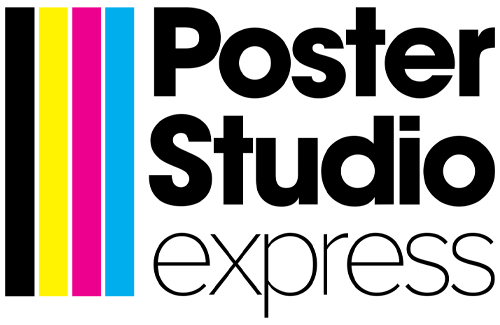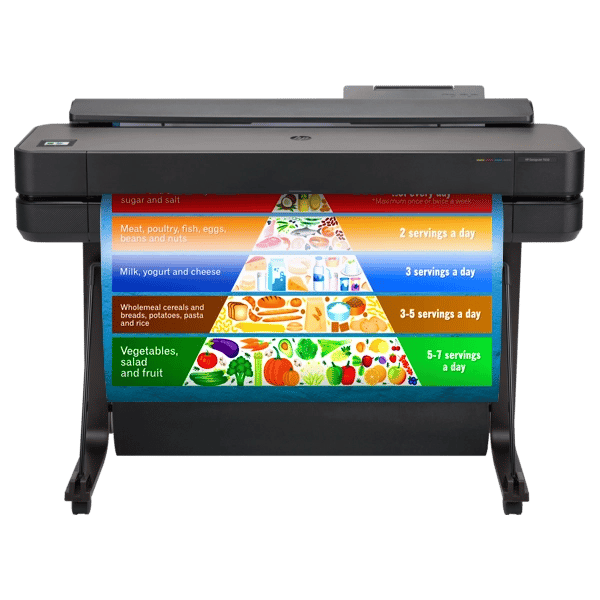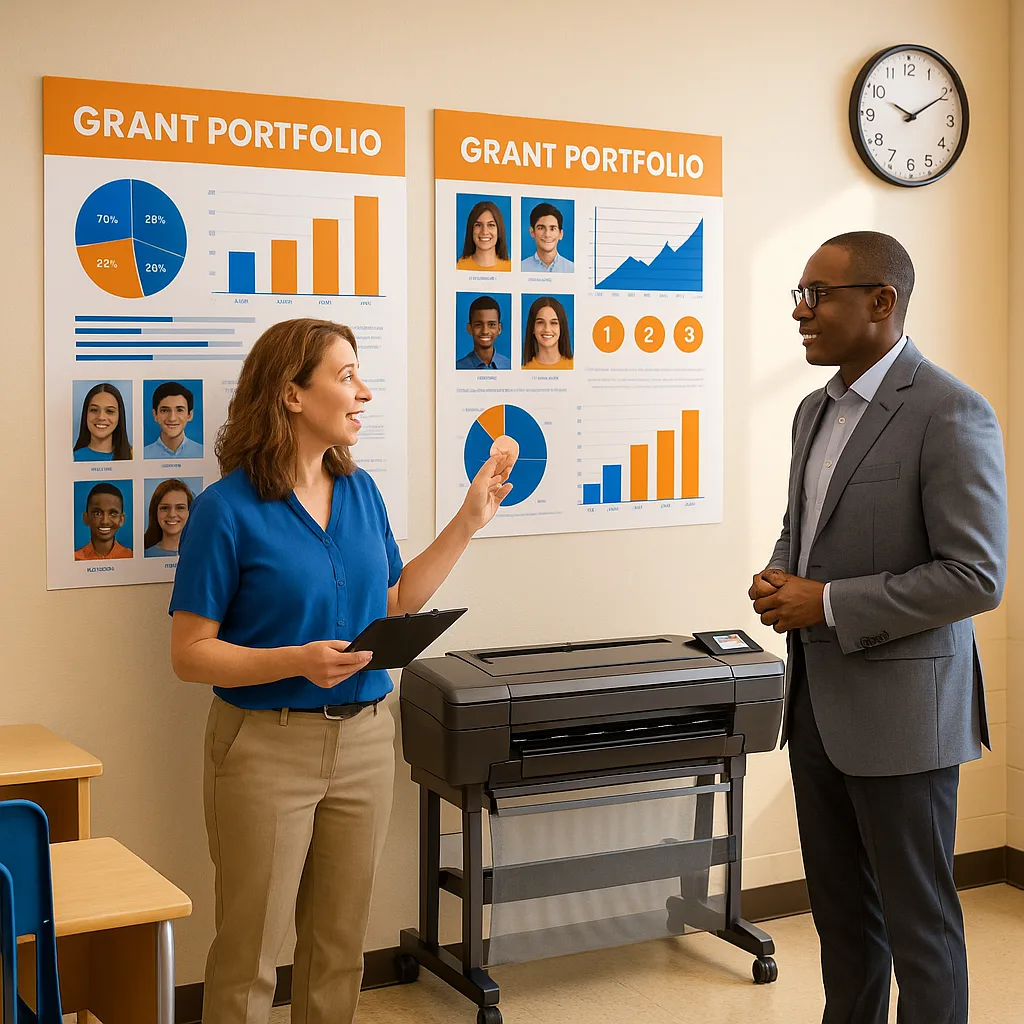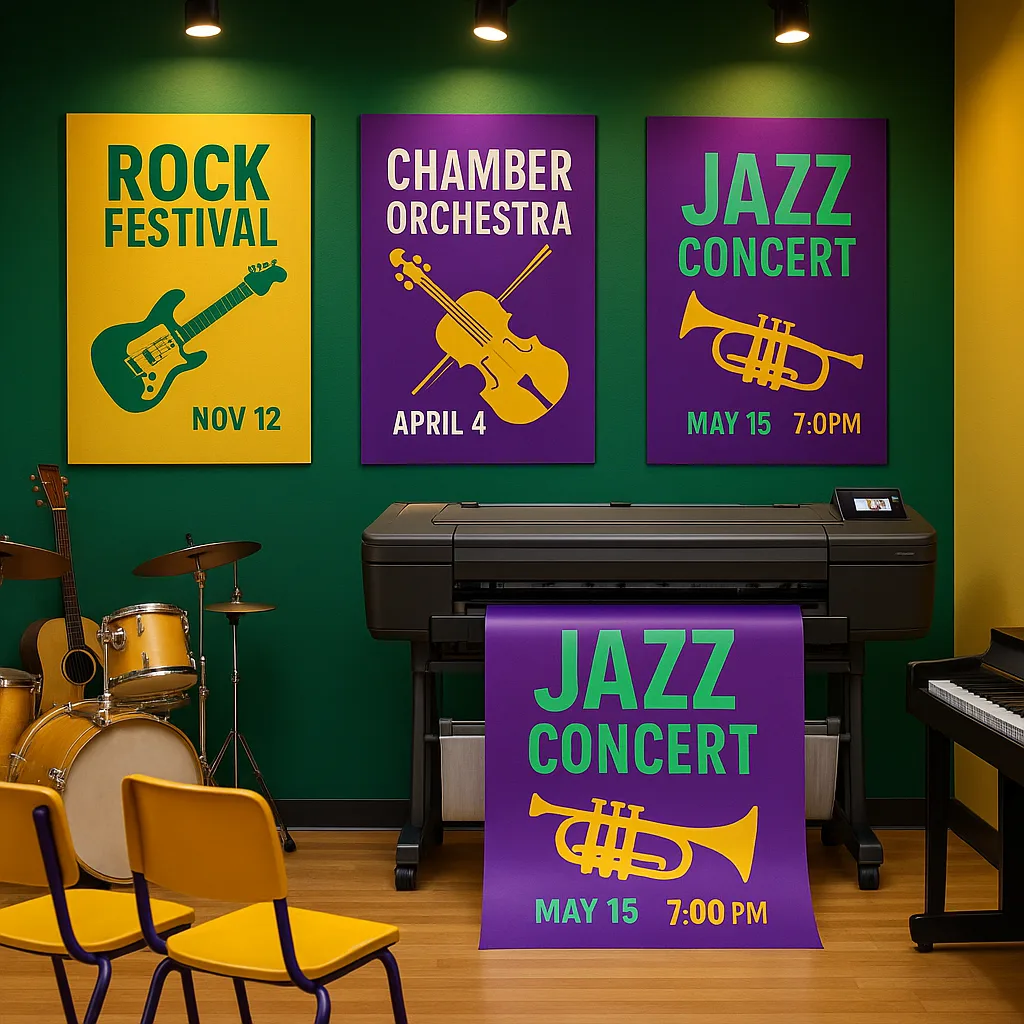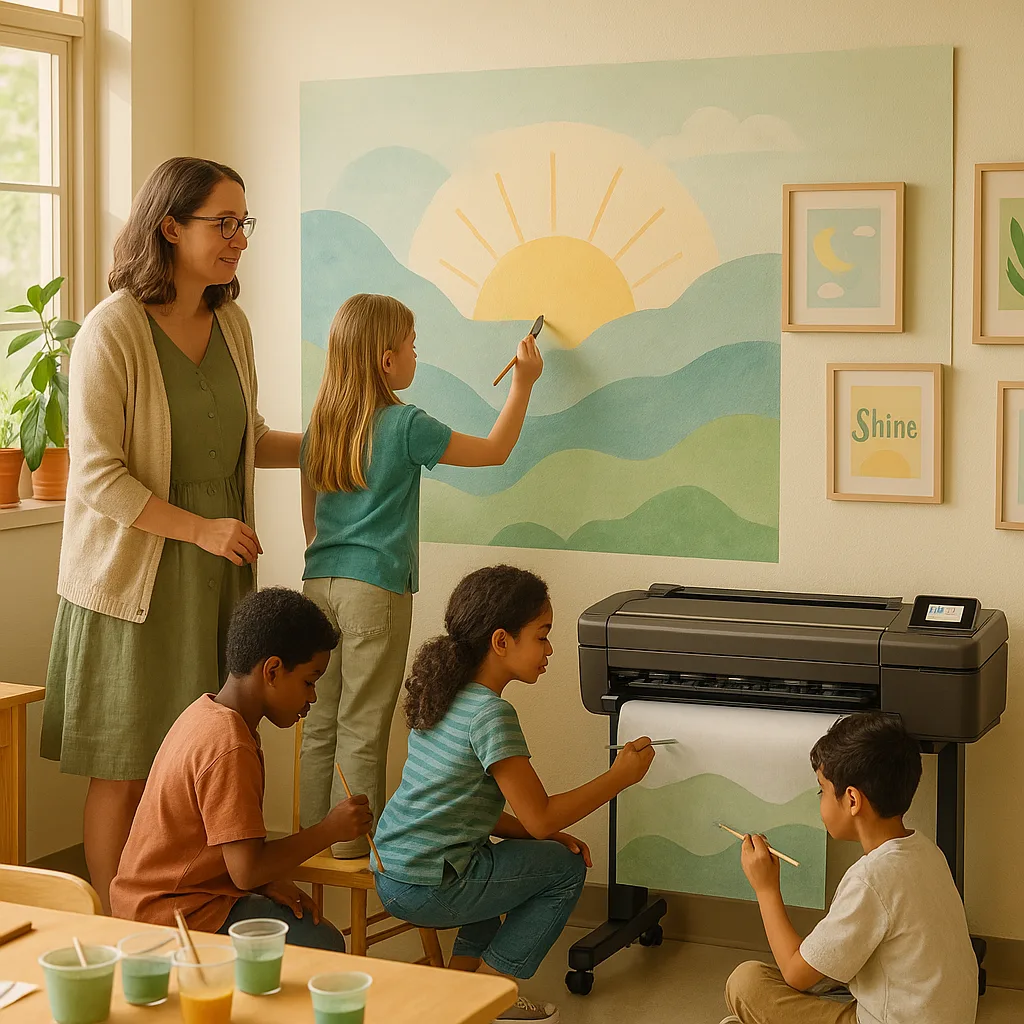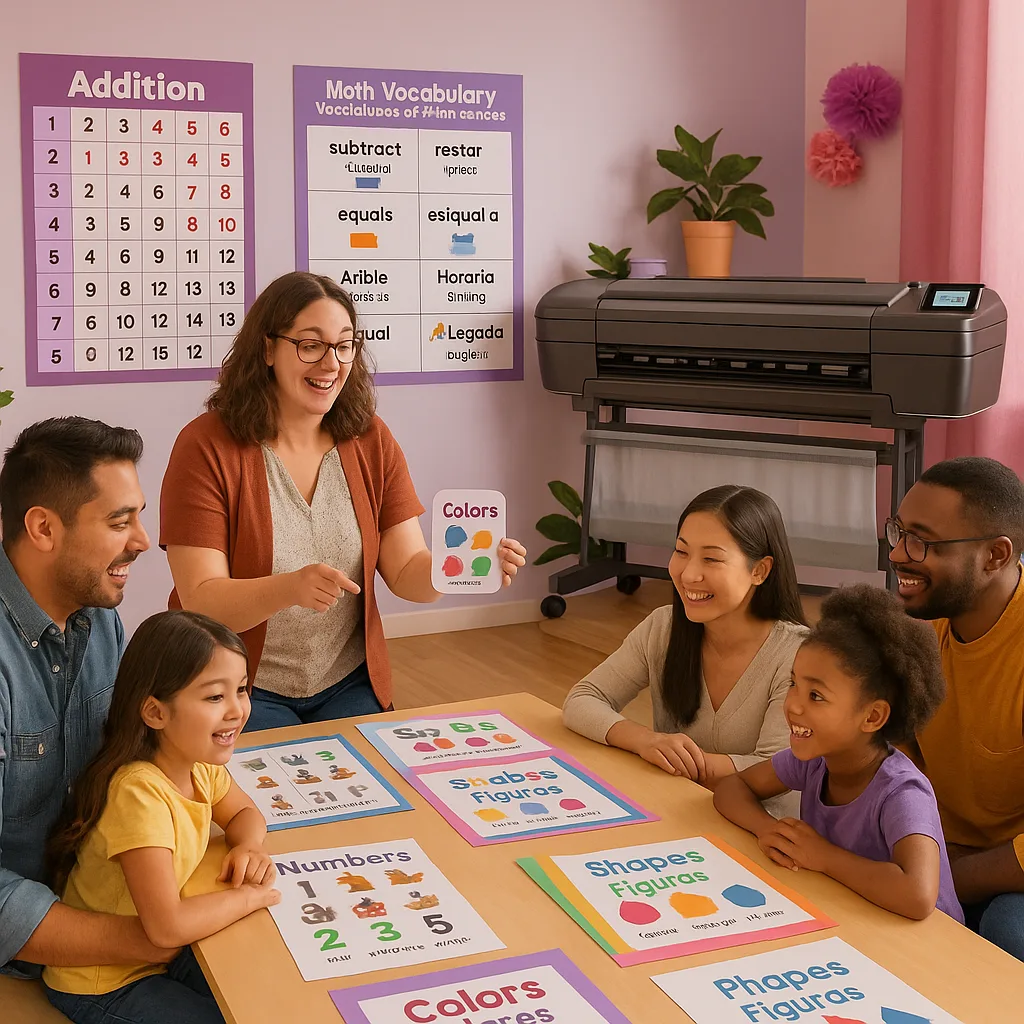
Grant Wins: Rural Schools Land $50K for Poster Maker
When Riverside Elementary in rural Montana received a rejection letter for their technology grant in 2022, Principal Maria Gonzalez could have given up. Instead, she joined forces with two neighboring districts to craft a compelling narrative that would ultimately secure $50,000 in funding for visual learning technology. Their teacher poster maker grant success story demonstrates how strategic collaboration and data-driven proposals can transform rural education.
The Challenge Facing Rural Schools
Rural schools face unique obstacles in securing educational technology funding. Limited grant-writing resources, smaller student populations, and geographic isolation often leave these communities overlooked by major funders. Yet the need for innovative teaching tools remains critical for student success.
Teacher Poster Maker Grant Success: The Three-School Alliance
In January 2023, three rural Montana schools—Riverside Elementary (enrollment: 145), Prairie View K-8 (enrollment: 212), and Mountain Creek Elementary (enrollment: 178)—formed an unprecedented alliance. Their goal was ambitious: secure substantial funding for visual learning technology that would benefit all three communities.
The catalyst for their collaboration came during a regional education conference where teachers from each school discovered they shared similar challenges. Without access to affordable visual materials, educators were spending personal funds on commercial posters or creating hand-drawn materials that consumed valuable planning time.
“We realized that individually, our schools were too small to attract major grant attention,” explains Sarah Chen, Grant Coordinator for Prairie View. “But together, we represented over 500 students and 45 teachers across three counties.”
Their strategic partnership focused on demonstrating collective impact while maintaining each school’s unique identity. By pooling resources for grant research and writing, they could pursue opportunities that would have been impossible alone.
Building the Foundation: Data Collection and Needs Assessment
The alliance’s first step involved comprehensive data collection across all three schools. They surveyed teachers about current visual material expenses, documented time spent creating classroom displays, and analyzed student engagement metrics with existing visual aids.
Key findings from their research revealed:
• Teachers spent an average of $387 annually on commercial posters
• Each educator dedicated 4-6 hours weekly to creating visual materials by hand
• 78% of surveyed students reported better content retention with visual aids
• Special education and ESL programs particularly struggled without customizable visual resources
This data became the cornerstone of their grant proposals, transforming anecdotal challenges into quantifiable needs that resonated with funders.
The Education Express 24 Desktop Poster Printer became central to their grant proposal

Strategic Approach to Teacher Poster Maker Grant Success
Identifying the Right Funding Sources
The three-school alliance didn’t pursue every available grant. Instead, they strategically targeted funding sources aligned with their visual learning goals:
Federal Programs:
• Title I funds for improving academic achievement
• Title IV-A for well-rounded education initiatives
• ESSER funds for pandemic recovery efforts
• Rural Education Achievement Grants (REAP)
State and Regional Opportunities:
• Montana Office of Public Instruction technology grants
• Regional education cooperative funding
• State STEM education initiatives
• Rural innovation grants
Private Foundation Support:
• Local community foundations
• Corporate education partnerships
• Technology company grant programs
• Rural development foundations
Their research revealed that combining multiple smaller grants often proved more successful than pursuing one large award.
Crafting Compelling Narratives
Each grant proposal told a unique story while maintaining consistent core messages. The alliance developed a framework that addressed:
1. Clear Problem Statement:
Rural isolation limits access to quality educational materials. Teachers exhaust personal resources creating visual aids, reducing time for instruction and student support.
2. Specific Solution:
In-house poster printing technology enables immediate creation of curriculum-aligned visual materials, saving money and time while improving educational outcomes.
3. Measurable Impact:
• Reduce teacher out-of-pocket expenses by 85%
• Save 4-6 hours weekly per educator
• Increase visual learning resources by 300%
• Improve test scores in visual-heavy subjects
4. Sustainability Plan:
The low poster printer cost per print (approximately $1.30-$1.50) ensures long-term affordability beyond initial grant funding.
The Power of Visual Documentation
Perhaps the most innovative aspect of their grant strategy involved creating visual portfolios that demonstrated exactly how poster technology would transform their classrooms. Using borrowed equipment, they produced sample materials that brought their proposals to life.
of grant reviewers cited visual examples as “extremely influential” in funding decisions
increase in grant success rate when proposals included visual portfolios
sample posters created to demonstrate potential impact
Breaking Down the $50,000 Success
The three-school alliance secured funding through multiple sources:
$18,000
Title I Enhancement Grant for visual learning materials
$15,000
ESSER III funds for pandemic recovery tools
$12,000
State rural education technology grant
$5,000
Local foundation matching funds
Implementation and Impact Measurement
Equipment Selection Process
With funding secured, the alliance carefully evaluated equipment options. Their selection criteria prioritized:
• User-friendly interfaces for non-technical staff
• Reliability with minimal maintenance needs
• Cost-effective consumables
• Comprehensive warranty coverage
• Professional development support
After extensive research, they chose the Education Express 36 Poster Printer for the main production centers and Teacher Pro Solo Packages for individual classroom needs.
The decision balanced upfront investment with long-term sustainability. Understanding true poster printer cost meant looking beyond purchase price to include supplies, maintenance, and support over the equipment’s lifetime.
Documenting Success: Year One Results
Nearly 9 in 10 teachers report significant improvement in classroom visual resources
Average reduction in teacher out-of-pocket expenses for visual materials
Students showing increased engagement with custom visual learning materials
Reduction in time spent creating visual materials by hand
3,847
Total posters created in Year 1Visual Impact
Custom posters spanning curriculum support, student recognition, school events, and community outreach—all created at a fraction of commercial costs$1.42
Average cost per posterCost Efficiency
Including all supplies and maintenance, demonstrating exceptional value compared to $15-25 commercial alternativesLessons Learned: Advice for Other Rural Schools
The success of this three-school alliance offers valuable insights for other rural communities seeking similar funding. Based on their experience, here are key recommendations:
Start With Coalition Building
Rural schools gain strength through collaboration. Consider forming partnerships with:
• Neighboring districts facing similar challenges
• Regional education service agencies
• Local community colleges or universities
• Parent-teacher organizations
• Chamber of Commerce education committees
These alliances amplify your voice and demonstrate broader community support to funders.
Document Everything
Successful grants require meticulous documentation:
• Track current spending on visual materials
• Survey staff about time allocation
• Collect student feedback on learning preferences
• Photograph existing classroom conditions
• Maintain records of academic performance metrics
This data becomes invaluable when demonstrating need and later proving impact.
Focus on Sustainability
Grant reviewers want assurance that their investment will have lasting impact. Address sustainability by:
• Calculating long-term cost savings
• Identifying budget lines for ongoing supplies
• Planning professional development programs
• Creating equipment sharing protocols
• Establishing maintenance schedules
Demonstrating how a teacher poster maker becomes self-sustaining strengthens your proposal significantly.
Leverage Support Resources
Don’t navigate the grant process alone. Utilize available support:
• Lifetime Design Service documentation for grant proposals
• 5 Year Warranty information to demonstrate reliability
• Customer success stories from similar schools
• Professional guidance from education technology specialists
These resources strengthen proposals and show funders you’ve thoroughly researched solutions.
Looking Forward: The Ripple Effect
The success of these three rural Montana schools has created a ripple effect throughout their region. Their documented results and willingness to share experiences have inspired six additional districts to pursue similar funding. The original alliance now serves as mentors, hosting grant-writing workshops and equipment demonstrations.
What began as three schools struggling to afford basic visual materials has transformed into a regional movement for educational equity. Their story proves that with strategic planning, collaborative effort, and compelling documentation, even the smallest rural schools can secure substantial funding for transformative technology.
Most importantly, the true winners are the students who now learn in visually rich environments where teachers can instantly create custom materials tailored to their unique needs. The investment in visual learning technology continues to pay dividends through improved engagement, better retention, and a more dynamic educational experience for all.
Ready to transform your school’s visual learning capabilities? Contact Poster Studio Express at 866-788-7900 to discuss grant-friendly solutions and receive documentation support for your funding proposals. With the right strategy and equipment, your rural school can achieve similar success.
